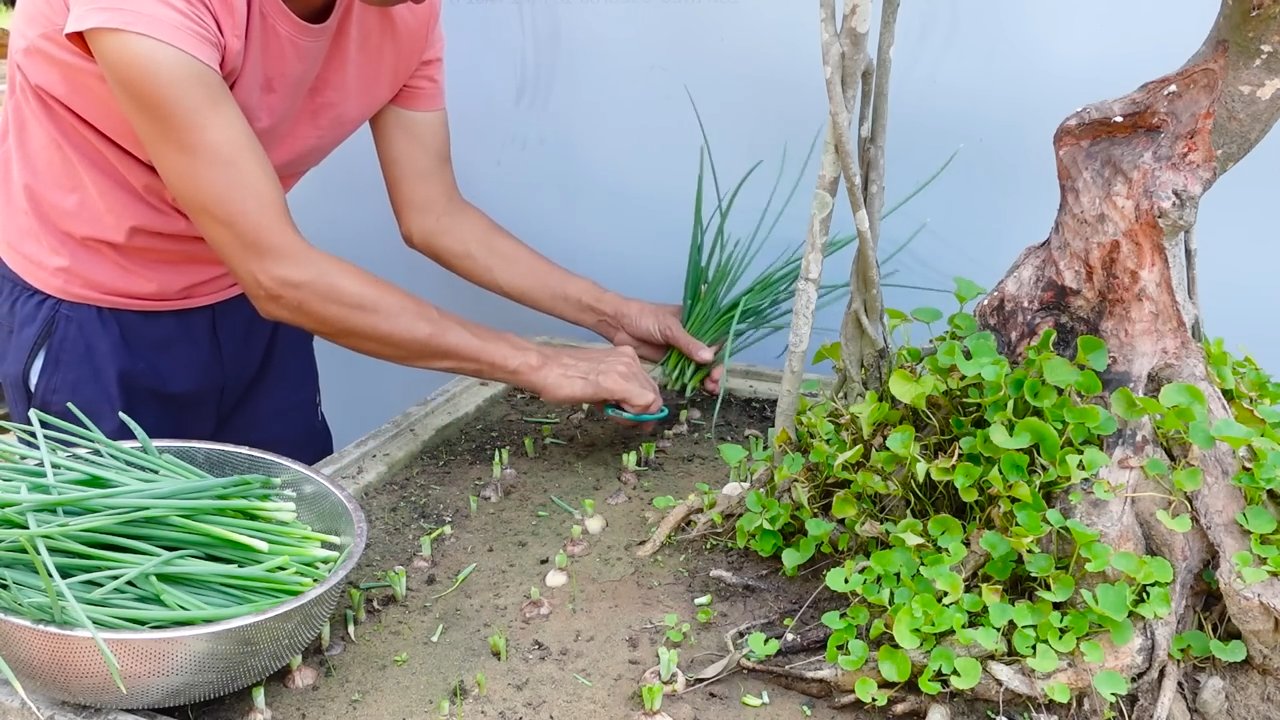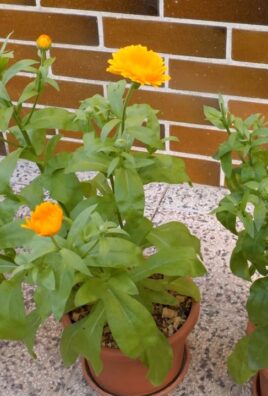Small space green onion gardening is easier than you think, even if you only have a windowsill! Are you tired of running to the grocery store every time you need a sprinkle of fresh green onion? Imagine having a constant supply of this flavorful herb right at your fingertips, ready to elevate your meals with a burst of freshness. This DIY guide will show you how to cultivate your own thriving green onion patch, no matter how limited your space may be.
For centuries, green onions have been a staple in cuisines around the world, adding a delicate oniony flavor to everything from Asian stir-fries to Mexican salsas. Their ease of cultivation has made them a popular choice for home gardeners, even those with the smallest of plots. But what if you don’t even have a plot? That’s where our ingenious DIY tricks come in!
In today’s fast-paced world, convenience is key, and what’s more convenient than growing your own food? Plus, store-bought green onions can often be limp and lifeless by the time you get them home. With our simple and effective methods for small space green onion cultivation, you’ll not only save money but also enjoy the unparalleled taste of freshly harvested herbs. Get ready to transform your kitchen into a mini-garden and impress your friends and family with your green thumb!

Growing Green Onions Indoors: A Beginner’s Guide to Never Buying Them Again!
Hey there, fellow plant enthusiasts! Are you tired of buying green onions only to use a tiny bit and watch the rest wilt away in your fridge? Well, I have a solution for you: growing your own green onions indoors! It’s surprisingly easy, incredibly rewarding, and a fantastic way to add fresh flavor to your meals whenever you need it. Plus, it’s a great way to reduce food waste. Let’s dive in!
What You’ll Need
Before we get started, let’s gather our supplies. The beauty of this project is that you probably already have most of these things lying around!
* **Green Onions:** Obviously! You can use store-bought green onions. Just make sure they have the roots still attached.
* **A Small Container:** A glass jar, a plastic cup, or even a repurposed yogurt container will work perfectly. Just make sure it’s clean.
* **Water:** Tap water is fine, but filtered water is even better.
* **Potting Soil (Optional):** While you can grow green onions in just water, using soil will give them a nutrient boost and help them grow even bigger and stronger.
* **Scissors or a Sharp Knife:** For harvesting your green onions.
* **A Sunny Spot:** Green onions need sunlight to thrive, so find a bright windowsill or a spot under a grow light.
Growing Green Onions in Water: The Simplest Method
This is the easiest way to get started, and it’s perfect if you’re short on time or just want to see quick results.
1. **Prepare the Green Onions:** Take your bunch of green onions and trim off the green tops, leaving about 2-3 inches of the white base with the roots attached. Don’t throw away the green tops! You can use them in your cooking right away.
2. **Place in Water:** Fill your container with enough water to cover the roots, but not so much that the white part of the onion is submerged. We want the roots to drink, not drown!
3. **Find a Sunny Spot:** Place your container on a sunny windowsill or under a grow light. Green onions need at least 6 hours of sunlight per day to grow well.
4. **Change the Water Regularly:** Every 1-2 days, change the water to keep it fresh and prevent bacteria from growing. This is crucial for healthy growth.
5. **Watch Them Grow!:** You should start to see new green shoots emerging from the top within a few days. It’s amazing how quickly they grow!
6. **Harvest Your Green Onions:** Once the green shoots are about 6-8 inches tall, you can start harvesting them. Simply snip off the amount you need with scissors, leaving about an inch of green growth at the base. This will allow the green onions to continue growing.
Growing Green Onions in Soil: For a More Robust Harvest
Growing green onions in soil requires a little more effort, but it can result in a larger and more flavorful harvest.
1. **Prepare the Green Onions:** Just like with the water method, trim off the green tops, leaving about 2-3 inches of the white base with the roots attached.
2. **Prepare the Container:** Fill your container with potting soil, leaving about an inch of space at the top.
3. **Plant the Green Onions:** Make a small hole in the soil for each green onion base. Plant the base so that the roots are covered and the white part of the onion is partially buried.
4. **Water Thoroughly:** Water the soil until it’s moist but not soggy.
5. **Find a Sunny Spot:** Place your container on a sunny windowsill or under a grow light.
6. **Water Regularly:** Keep the soil consistently moist, but don’t overwater. You want the soil to be damp, not waterlogged. Check the soil moisture every day or two and water when the top inch of soil feels dry.
7. **Fertilize (Optional):** To give your green onions an extra boost, you can fertilize them every few weeks with a diluted liquid fertilizer. Follow the instructions on the fertilizer package.
8. **Harvest Your Green Onions:** Once the green shoots are about 6-8 inches tall, you can start harvesting them. Snip off the amount you need with scissors, leaving about an inch of green growth at the base.
Troubleshooting: Common Problems and Solutions
Even with the best intentions, you might encounter a few problems along the way. Here are some common issues and how to fix them:
* **Yellowing Leaves:** This could be a sign of overwatering, underwatering, or lack of nutrients. Make sure you’re watering properly and consider adding a diluted fertilizer. Also, ensure they are getting enough sunlight.
* **Slow Growth:** This could be due to lack of sunlight, poor soil, or insufficient watering. Move your green onions to a sunnier spot, use a good quality potting soil, and make sure you’re watering them regularly.
* **Rotting Roots:** This is usually caused by overwatering. Make sure your container has drainage holes and that you’re not letting the soil stay soggy. If the roots are already rotting, you might need to start with fresh green onion bases.
* **Pests:** While it’s rare for indoor green onions to be affected by pests, you might occasionally find aphids or other small insects. If this happens, try washing the leaves with a mild soap and water solution.
Tips and Tricks for a Bountiful Harvest
Here are a few extra tips to help you get the most out of your indoor green onion garden:
* Succession Planting: To ensure a continuous supply of green onions, plant new bases every few weeks. This way, you’ll always have fresh green onions ready to harvest.
* Use Different Varieties: Experiment with different varieties of green onions to find your favorite. Some varieties are milder, while others are more pungent.
* Don’t Throw Away the Roots: After harvesting your green onions, you can replant the roots to start a new plant. This is a great way to recycle and save money.
* Rotate Your Crops: If you’re growing green onions in soil, it’s a good idea to rotate your crops every few months. This will help prevent soil depletion and pest problems.
* Give Them a Little Love: Talk to your green onions, sing to them, or just admire them. Plants respond to positive energy, and a little bit of love can go a long way!
Harvesting and Using Your Homegrown Green Onions
Harvesting your green onions is the most rewarding part of the process! As mentioned earlier, simply snip off the amount you need with scissors, leaving about an inch of green growth at the base.
Here are some delicious ways to use your homegrown green onions:
* Garnish: Sprinkle chopped green onions on soups, salads, tacos, and other dishes for a burst of fresh flavor.
* Stir-fries: Add chopped green onions to stir-fries for a savory and aromatic touch.
* Omelets and Frittatas: Mix chopped green onions into omelets and frittatas for a flavorful and nutritious breakfast.
* Dips and Sauces: Use chopped green onions to make dips and sauces, such as sour cream and onion dip or green onion pesto.
* Salads: Add chopped green onions to salads for a refreshing and crunchy element.
* Baked Potatoes: Top baked potatoes with sour cream, cheese, and chopped green onions for a classic and satisfying meal.
Why Grow Green Onions Indoors?
Besides the obvious benefit of having fresh green onions on hand whenever you need them, there are several other reasons to grow them indoors:
* It’s Sustainable: Growing your own green onions reduces your reliance on store-bought produce, which often travels long distances and contributes to carbon emissions.
* It’s Economical: Once you get started, you can grow green onions indefinitely from the same base, saving you money on groceries.
* It’s Educational: Growing green onions is a great way to learn about plants and where your food comes from.
* It’s Therapeutic: Gardening is a relaxing and rewarding activity that can help reduce stress and improve your mood.
* It’s Fun! Watching your green onions grow is a fascinating and enjoyable experience.
So, what are you waiting for? Grab some green onions, a container, and some water (or soil), and get started on your indoor green onion garden today! You’ll be amazed at how easy and rewarding it is. Happy growing!
Conclusion
So, there you have it! Growing your own green onions in a small space isn’t just a fun project; it’s a game-changer for your kitchen and your wallet. Forget those sad, wilted bunches from the grocery store. Imagine snipping fresh, vibrant green onions whenever you need them, adding a burst of flavor to your meals with minimal effort and maximum satisfaction. This DIY trick is a must-try because it’s incredibly easy, cost-effective, and sustainable. You’re reducing food waste by regrowing scraps, minimizing your trips to the store, and enjoying the freshest possible ingredients.
But the benefits don’t stop there. Think about the joy of watching something grow, even in a tiny container on your windowsill. It’s a little connection to nature, a small reminder of the beauty and abundance that surrounds us. Plus, it’s a fantastic way to get kids involved in the kitchen and teach them about where their food comes from.
Ready to take your culinary creations to the next level?
Consider these variations to personalize your green onion growing experience:
* **Different Containers:** Experiment with different types of containers, from repurposed yogurt cups to stylish ceramic pots. Just make sure they have drainage holes.
* **Hydroponics:** For a more advanced approach, try growing your green onions hydroponically. This involves suspending the roots in water with added nutrients, eliminating the need for soil.
* **Companion Planting:** Plant your green onions alongside other herbs and vegetables that benefit from their presence. Green onions are known to deter certain pests, making them a valuable addition to any garden.
* **Different Varieties:** While regular green onions are the easiest to regrow, you can also try growing other varieties, such as scallions or chives, using the same method.
Don’t be afraid to experiment and find what works best for you. The beauty of this DIY project is its simplicity and adaptability. The most important thing is to get started and enjoy the process.
We’re confident that once you try this simple DIY trick for growing your own green onions in a small space, you’ll be hooked. It’s a rewarding experience that will enhance your cooking and bring a touch of green to your home. So, grab those green onion scraps, find a sunny spot, and get ready to enjoy a continuous supply of fresh, flavorful green onions.
Now, we want to hear from you! Have you tried growing your own green onions before? What tips and tricks have you learned along the way? Share your experiences in the comments below. We can’t wait to see your green onion gardens and hear about the delicious dishes you’re creating with your homegrown bounty. Let’s cultivate a community of green onion enthusiasts and inspire others to embrace the joy of growing their own food, one small space at a time. This method of growing **small space green onion** is a game changer.
Frequently Asked Questions (FAQ)
How long does it take for green onions to regrow?
Typically, you’ll start to see new growth within a few days. Within a week or two, you should have enough green onion to harvest. The speed of growth depends on factors like sunlight, water, and temperature. Warmer temperatures and plenty of sunlight will encourage faster growth.
What part of the green onion do I need to regrow it?
You need the white part of the green onion with the roots attached. Cut off the green tops, leaving about 2 inches of the white base with the roots intact. This is the part that will sprout new growth.
How often should I water my regrowing green onions?
Keep the soil consistently moist, but not soggy. Water when the top inch of soil feels dry to the touch. Overwatering can lead to root rot, so make sure your container has good drainage. If you’re growing them in water only, change the water every 1-2 days to prevent bacteria growth.
What kind of soil is best for regrowing green onions?
A well-draining potting mix is ideal. You can use a general-purpose potting mix or create your own by combining equal parts of potting soil, perlite, and compost. This will provide the necessary nutrients and drainage for healthy growth.
How much sunlight do green onions need?
Green onions thrive in bright, indirect sunlight. Place your container near a sunny window that receives at least 6 hours of sunlight per day. If you don’t have a sunny window, you can use a grow light to supplement the natural light.
Can I regrow green onions in water only?
Yes, you can regrow green onions in water. Place the white base of the green onion in a glass or jar filled with enough water to cover the roots. Change the water every 1-2 days. Once the green onions have grown a few inches, you can transplant them into soil for continued growth.
How many times can I regrow green onions from the same base?
You can typically regrow green onions from the same base several times, usually 2-3 times. After each harvest, the growth may become slower and less vigorous. Eventually, the base will exhaust its resources and stop producing new growth.
Do I need to fertilize my regrowing green onions?
While not essential, fertilizing can help promote faster and more robust growth. Use a diluted liquid fertilizer every 2-3 weeks. Choose a fertilizer that is balanced and suitable for vegetables or herbs.
What if my green onions start to turn yellow or brown?
Yellowing or browning leaves can indicate a few different problems. It could be due to overwatering, underwatering, lack of sunlight, or nutrient deficiency. Adjust your watering schedule, ensure adequate sunlight, and consider fertilizing if necessary.
Can I grow green onions indoors year-round?
Yes, you can grow green onions indoors year-round. As long as you provide them with enough light, water, and nutrients, they will continue to grow regardless of the season.
Are there any pests or diseases that affect green onions?
Green onions are generally pest-resistant, but they can occasionally be affected by aphids, thrips, or onion maggots. Inspect your plants regularly and take action if you notice any signs of infestation. You can use insecticidal soap or neem oil to control pests. Root rot can also be a problem if the soil is too wet.
How do I harvest my regrown green onions?
Simply snip off the green tops with scissors or kitchen shears, leaving about an inch of the green onion above the white base. This will allow the green onion to continue growing and producing new shoots.
Can I use this method to grow other types of onions?
While this method works best with green onions, you can also try it with other types of onions, such as scallions or chives. The results may vary depending on the variety.
Is it safe to eat regrown green onions?
Yes, it is perfectly safe to eat regrown green onions. Just make sure to wash them thoroughly before using them in your cooking.
What are the benefits of growing my own green onions?
Growing your own green onions offers several benefits, including:
* Fresh, flavorful ingredients
* Cost savings
* Reduced food waste
* Sustainable gardening practice
* Educational opportunity
* A touch of green to your home
This method of growing **small space green onion** is a great way to have fresh herbs on hand.




Leave a Comment